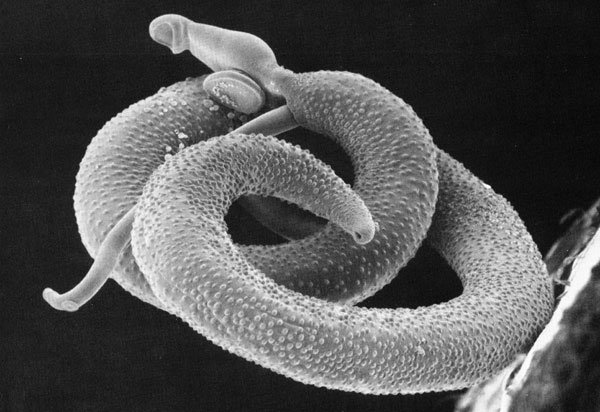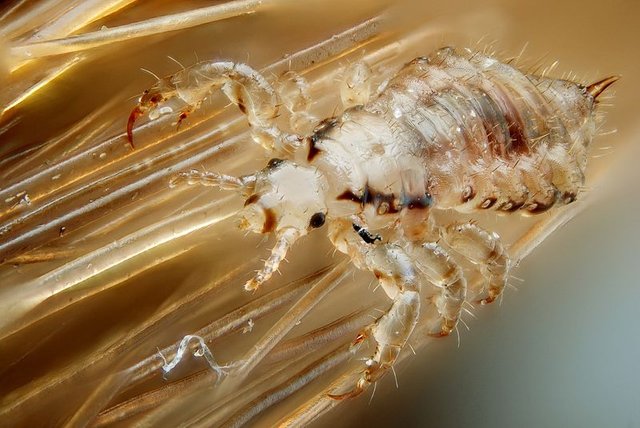PARASITOLOGY
PARASITOLOGY
what is parasitology?
Parasitology can be defined as a discipline that deals with the study of parasites and their interactions with their hosts.
what is a parasite?
A parasite is a living organism, which takes its nourishment, shelter and other needs from a host.
what is a host?
A host is an organism which supports the parasite.
Parasites are protozoa, helminthes, and some arthropods.
DIFFERENT KINDS OF PARASITES
Ectoparasite – a parasitic organism that lives on the outer surface of its host, for example: lice, ticks, mites etc.
Endoparasites – parasites that live inside the body of their host, for example: Entamoeba histolytica.
Obligate Parasite - This parasite is completely dependent on the host during a segment or all of its life cycle, for example: Plasmodium spp.
Facultative parasite – a parasite that exhibits both parasitic and non-parasitic modes of living and hence does not absolutely depend on the parasitic way of life, but is capable of adapting to it if placed on a host. For example: Naegleria fowleri
Accidental parasite – when a parasite attacks an unnatural host and survives. For example: Hymenolepis diminuta (rat tapeworm).
Erratic parasite - is one that wanders in to an organ in which it is not usually found. For example: Entamoeba histolytica in the liver or lung of humans.
Most of the parasites which live in/on the body of the host do not cause disease (non-pathogenic parasites)
DIFFERENT KINDS OF HOSTS
Definitive host : a host that harbors a parasite in the adult stage or where the parasite undergoes a sexual method of reproduction.
Intermediate host : harbors the larval stages of the parasite or an asexual cycle of development takes place. In some cases, larval development is completed in two different intermediate hosts, referred to as first and second intermediate hosts.
Paratenic host : a host that serves as a temporary refuge and vehicle for reaching an obligatory host, usually the definitive host.
Reservoir host : a host that makes the parasite available for the transmission to another host and is usually not affected by the infection.
Natural host : a host that is naturally infected with certain species of parasite.
Accidental host : a host that is under normal circumstances not infected with the parasite.
Any organism that spends part or all of its life cycle intimately associated with another organism of a different species is considered as Symbiont (symbiote) and this relationship is called symbiosis (symbiotic relationships).
Types of Symbiotic Association
• Mutualism is a relationship in which both partners benefit from the association. Mutualism is usually obligatory, both partners are metabolically dependent upon each other and one cannot live without the help of the other; however, none of the partners suffers any harm from the association. One classic example is the relationship between certain species of flagellated protozoa living in the gut of termites. The protozoa, which depend entirely on a carbohydrate diet, acquire their nutrients from termites. In return they are capable of synthesizing and secreting cellulases; the cellulose digesting enzymes, which are utilized by termites in their digestion.
• Commensalism is a relationship in which one partner benefits from the association, but the host is neither helped nor harmed. Commensalism may be facultative, in the sense that the commensal may not be required to participate in an association to survive E.g. Most of the normal floras of the humans’ body can be considered as commensals.
• Parasitism is a relationship in which one of the participants, the parasite, either harms or lives at the expense of the host.
Parasites may cause mechanical injury, such as boring a hole into the host or digging into its skin or other tissues, stimulate a damaging inflammatory or immune response. E.g. Worms like Ascaris lumbricoides reside in the gastrointestinal tract of man, and feed on important items of intestinal food causing various illnesses.
EFFECT OF PARASITES ON THE HOST
The damage which pathogenic parasites produce in the tissues of the host may be described in the following two ways;
Direct effects of the parasite on the host
• Mechanical injury: this may be inflicted by a parasite by means of pressure as it grows larger, e.g. Hydatid cyst causes blockage of ducts such as blood vessels producing infraction.
• Deleterious effect of toxic substances: in Plasmodium falciparum production of toxic substances may cause rigors and other symptoms.
• Deprivation of nutrients, fluids and metabolites: The parasite may produce disease by competing with the host for nutrients.
Indirect effects of the parasite on the host
• Immunological reaction: Tissue damage may be caused by immunological response of the host, e.g. nephritic syndrome following Plasmodium infections.
Classification and General Characters of Human Parasites
Parasites form part of the animal kingdom which comprises about 800,000 identified species categorized into 33 phyla.
The acceptable taxonomic classification of human parasites includes Endoparasites and Ectoparasites.
Endoparasites which is sub-classified into Helminthic parasites (multicellular organisms) and Protozoan parasites (unicellular organisms).
Helminthic parasites are either flat worms (Trematodes), segmented ribbon like worms (Cestodes) or cylindrical worms (Nematodes).
Endoparasites
Most parasites of humans live inside the host (endo- means internal). These are helminthes (worms of various types), protozoa, or sometimes larval stages of arthropods (insects, mites, etc.)

Schistosoma mansoni is an endoparasite that lives in human blood vessels.
Image source:https://upload.wikimedia.org/wikipedia/commons/5/5f/Schistosoma_mansoni2
Ectoparasites
Human ectoparasites live on the host (ecto- means outside of). They include fleas, lice, mosquitoes, bugs, mites, ticks etc. Ectoparasites attach to the skin to feed and do not remain on the host for their entire lives.

Human head lice (Pediculus humanus capitis) are ectoparasites.
Image source:https://upload.wikimedia.org
Reference
- Veterinary Parasitology, vol. 101, - Zarlenga D. S. and Higgins, J. (2001)
- https://en.m.wikipedia.org/wiki/Parasitism
- Cox F. E. G. (2002): History of Human Parasitology. In Clinical Microbiology Reviews, Vol. 15, No. 4,
wow very interesting post!!!
Thanks
Nice summary. Makes my skin itch a bit though.
.
ColdMonkey mines Gridcoin through generating BOINC computations for science.